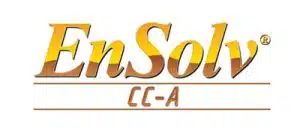CONTENT ON THIS PAGE IS RETAINED FOR INFORMATION ONLY
DUE TO n-Propyl bromide now being included in Annex 14 of REACH
EnviroTech Europe Ltd (ETE) continue to publish it as historical information and to record changes occurring in legislation which have affected decisions on formulations and equipment used in vapour degreasing - the most effective, quickest, flexible and cheapest cleaning system used in industry.
EnSolv® invented and patented by EnviroTech has been a market leader all over the world for vapour degreasing. It is based on n-bromopropane (nPB) which now cannot be used as a vapour degreaser within the UK or EU without authorisation.
Archived information about EnSolv® can be found using the Discontinued Products & Resources navigation menu on this page.
Using experience accumulated over 40 years supplying and supporting users of the vapour degreasing process ETE specialists have developed “drop in” alternatives:
ProSolv®, ProSolv5408e® and EnSolv CC-A® give the same or improved level of performance and economy as the original EnSolv® products.
Please contact our advisers who are available to discuss your needs and propose the best replacement product.
Or please click here to return to our vapour degreasing products homepage for information about our current products.
N-Propyl Bromide gains SNAP approval
US SNAP approval for n-Propyl Bromide
Doug Went, CChem, MRSC, Technical Manager of Enviro Tech Europe, relates some good news for manufacturers, suppliers and users of n-Propyl Bromide based cleaning and degreasing products.
The US Environmental Protection Agency (EPA) has given approval to nPB following an in depth study as part of its ‘Significant New Alternatives Policy’ (SNAP) program. SNAP was developed to review and approve alternatives to Class I and II ozone depleting substances. These alternatives must not present greater risk to public health or the environment than the substance they replace. nPB was investigated as a solvent cleaner to substitute 111 trichloroethane and CFC-113 in vapour degreasing machines. The EPA looked at several criteria before coming to this judgement:
Atmospheric effects:
The Ozone Depletion Potential (ODP) was found to be significantly lower (0.013 – 0.018) than the substances they replace and the Global Warming Potential (GWP) was found to be comparable to or below that of previously approved substitutes.
Ecosystem risks:
Consideration was given to the possible impacts of nPB pollution in soil and water. This included review of the organic carbon coefficient (Koc) for soil mobility, hydrolysis in water, volatilisation from water to air, LC50 values, partition coefficients (Kow) and bioconcentration values. nPB because of its high volatility and fast breakdown in water was considered to be less persistent in the environment than many solvents. The LC50 for nPB at 67mg/lt is comparable with other alternatives and bioconcentration is very low. It is less toxic to marine life than some acceptable alternatives such as Trichloroethylene, d- Limonene and some aqueous cleaners.
Flammability:
The EPA agrees that nPB does not have a flashpoint using standard test conditions and is therefore not flammable under normal use conditions. The fact that it has upper and lower explosion limits is typical of halogenated hydrocarbons. Therefore the risks are no greater than with using alternative halogenated solvents.
Occupational risks:
The EPA reviewed toxicological studies carried out over the last few years. There is too much data to summarise effectively here, but these included Central Nervous System effects, case studies on human exposures, reproductive effects on rats, and metabolic studies in rats and mice. A considerable part of the study considered reprotoxic effects. The data showed that once established uncertainty factors have been applied, the lowest levels for acceptable exposure were derived from reproductive effects.
Uncertainty factors of up to 10 times are applied to the human equivalent concentrations derived from animal exposure endpoints. They reflect the potential differences between humans and animals. Therefore the lowest level of exposure found to cause harm is divided by 10. The exposure level thereby calculated by the EPA, sufficient to protect against male fertility effects, is in the range18-30ppm and for females in the range 17-22ppm. These lower exposure limits were considered a conservative starting point and exposure to 25ppm would not pose substantially greater risks.
Industry studies show that the majority of users maintain exposure levels well below 25ppm. Therefore, the EPA concludes that the voluntary recommended ‘Acceptable Exposure Limit’ (AEL) of 25ppm published in 2003 is still valid.
A review of manufacturers recommended maximum exposure limits shows a range from 5- 100ppm. In the US, OSHA (Occupational Safety and Health Administration) the authority who issues official ‘Permissible Exposure Limits’ (PEL) do not list nPB. They also reviewed various studies designed to calculate occupational exposure levels. The EPA concluded that 25ppm was a safe level based on established principles of risk management. In coming to this conclusion they cast doubts on the ACGIH ‘Threshold Limit Value’ (TLV) of 10ppm citing other more detailed studies. To date there is no official occupational exposure limit in the US or Europe.
Enviro Tech bases its recommended occupational exposure limit of 100ppm on two of the studies used by the EPA. The authors did not apply such high uncertainty factors as the EPA. Our toxicologists believe that the evidence collated by the EPA in giving their SNAP approval does not warrant the classification of nPB, in Europe, as a category 2 Reproductive Toxin.
The EPA accepts that the industry has self regulated the iso Propyl Bromide (iPB) content of formulations sufficiently at less than 500ppm without regulation and at this level, even exposure to 100ppm of nPB would mean exposure to less than 1ppm of iPB which is the limit set by Japan and Korea.
Consumer risks:
In the workplace, the EPA believes that exposures of less than 25ppm are normally achieved by most operators of vapour degreasing machines. Higher exposure levels could easily be reduced by changing work practices and improving equipment design.
General population risks from ambient exposure:
The exposure of the local population to nPB from companies using vapour degreasing machines is insignificant being well below 1ppm and is therefore of no risk to the general population.
Cost and availability:
Products like the precision cleaner EnSolv® based on nPB developed for the metal cleaning and electronics industries are readily available. Although the SNAP program is primarily a part of the US legislative system, the conclusions are proof that nPB is a safer alternative than trichloroethylene in vapour degreasing. This comprehensive study has fully evaluated nPB and shown it to be an acceptable substance for precision cleaning used in vapour degreasing for industrial cleaning applications. There is no suggestion that nPB is a carcinogen or mutagen. Users of nPB technology can be confident that they are using a safe product which when used responsibly will not harm human health or damage the environment.
Editor’s note:
here are two websites for additional information:
http://www.epa.gov/ozone/snap/solvents/
and
http://ozone.unep.org/Meeting_Documents/oewg/27oewg/OEWG-27-9E.pdf
(paragraphs 74-79)
We can provide you with a Material Safety Data Sheet, independent laboratory reports, product samples or technical assistance. For more information or advice please contact us by telephone on +44 (0) 20 8281 6370 or use our contact form.
Vapour degreasing solvents are supplied and supported by EnviroTech Europe Ltd. Manufactured in the United Kingdom and available on short delivery times through our dedicated team of distributors worldwide.
Share this page:

